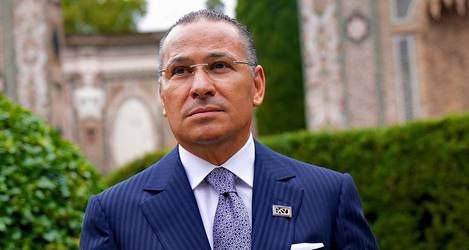At the start of the COVID-19 crisis, stocks around the world were plummeting as people feared how the disease might impact the global economy. A few months on and millions of people are out of a job and businesses in the hardest-hit industries such as tourism and hospitality are struggling to survive. But in recent weeks, the stock market has been surprisingly positive. Could it be that investors are much more optimistic about the future than the scientists?
?Wall Street stocks rose sharply in early July, as bullish sentiment in China boosted investors’ optimism in markets around the world for a recovery from the coronavirus pandemic. Although the market is not currently at the record highs it was in mid-February, it isn't too far off. The S&P 500 is hovering around where it was last autumn.
“Investors seem to have decided that the past three months were just a bad dream that we’re waking up from,” Scott Clemons, chief investment strategist for private banking at Brown Brothers Harriman, told the New York Times.
Beyond Wall Street
Following the Independence Day weekend, the S&P 500 rose 1.6% in New York, despite an increase in new COVID-19 cases across the country and roughly 30 million newly unemployed Americans.
The market's behaviour can be explained in large part by the actions of the Federal Reserve, which has taken unprecedented measures to pump money into the economy and stabilise the markets. Since March, the Federal Reserve has created roughly $2.9 trillion, most of which has gone into financial markets. The federal government has said it would borrow a record-breaking $3 trillion from April to June, to support businesses during the pandemic. Such decisive steps have reassured investors.
Meanwhile, many American first-time investors have taken the plunge during quarantine - perhaps hoping to make the most of low share prices or simply trying to alleviate their boredom. At Charles Schwab, clients opened a record 609 000 new brokerage accounts, with almost half of them created in March alone. Online trading platforms and investment apps have also helped new investors buy into the markets.
Yet political tensions between the United States and China — the world’s two largest economies — remain high, potentially disrupting the American businesses' recovery plans.
Optimism in China
China’s yuan has strengthened to levels last hit in March and Chinese financial markets have rallied as confidence builds that the country’s economy is well on its way to recovering from the COVID-19 pandemic.
As Bryce Elder, Harry Dempsey, and Daniel Shane point out in the Financial Times, the front page of the state-run China Securities Journal promised investors a healthy bull market and the mainland Chinese stocks jumped accordingly. The CSI 300 index of Shanghai and Shenzhen-listed shares rose to 5.7% on Monday the 6th of June, the biggest daily rise since February last year. It closed at a five-year high, just 13% off its previous peak in June 2015.
These increases are a clear indication that the millions of individual investors are feeling optimistic. The driving force in China's equity markets, retail investors have been banking on the technology sector in particular.
Elsewhere in Asia, Hong Kong’s Hang Seng index added 3.8% to enter a technical bull market, defined as a 20% rise. Japan’s Topix added 1.6% while South Korea’s Kospi rose 1.7%.
In Europe, the regional benchmark Stoxx 600 closed 1.6% higher. London’s FTSE 100 added 2.1%, with financial and mining stocks being particularly bolstered by the wave of Chinese optimism.
First-time investors around the world
In what seems to be a global trend, India has also seen a large number of new retail investors entering the market directly through stock exchanges. Many of these first-time investors are young, looking to invest in their future while protecting their savings. Their arrival on the scene has increased retail participation in the stock market to new heights. Non-institutional investors have increased their share to over a decade’s high of nearly 70%.
Why invest now?
Even for investors who remain sceptical of the optimistic recovery predictions, there are plenty of interesting opportunities. Favourable policies in countries around the world - from lowering interest rates and the discount rate, thereby increasing the weight attached to post-pandemic earnings flows to advantageous stimulus packages - are encouraging huge numbers of people to start investing. It helps that technology has made the markets more accessible than ever before.
What's next?
The threat of a second wave looms large even before much of the world has recovered from the first. Nevertheless, it would seem that the markets have rebounded from the lows of early March but some investors are now content to wait for more substantial proof of a recovery in corporate earnings. If this optimism proves to be unwarranted, turns out to be unwarranted, a fear response could take over and everyone, not just retail investors, would face huge losses. But for now, many investors are anticipating a V-shaped recovery and are buying accordingly.




